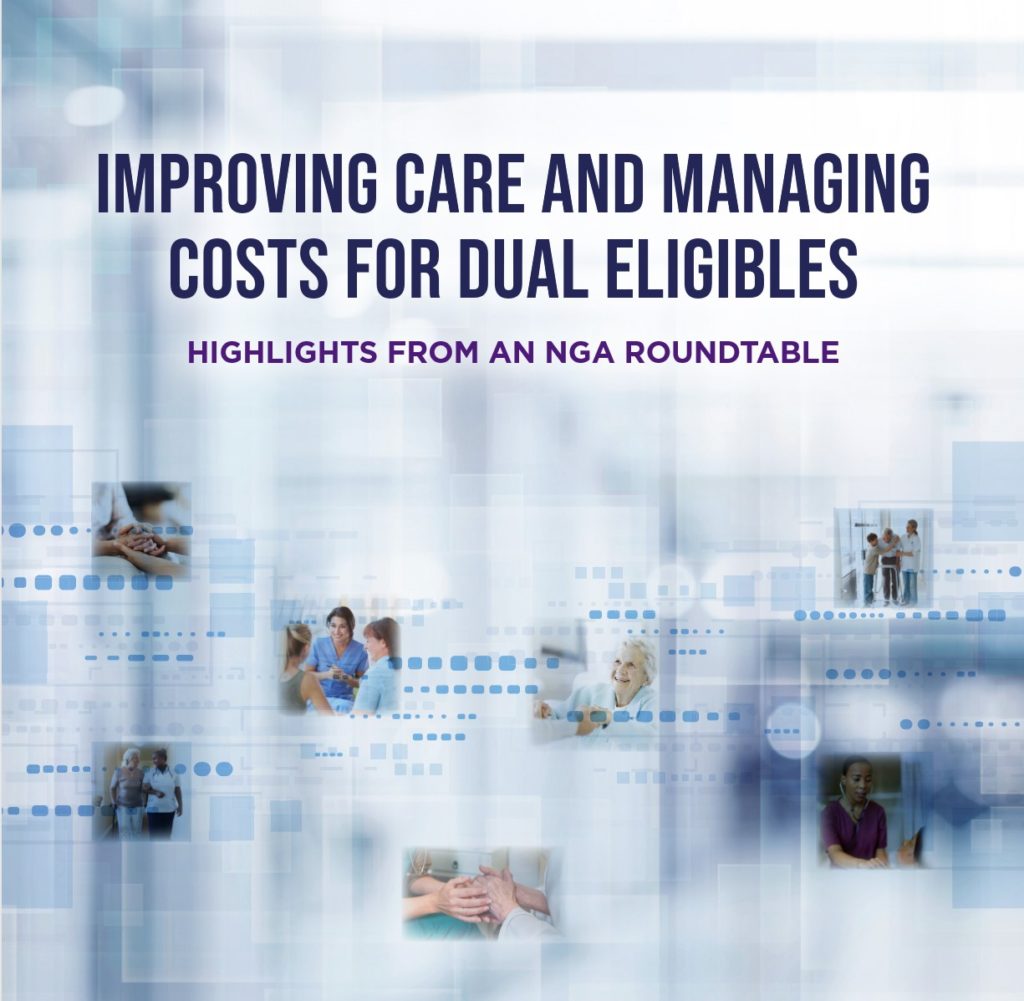Highlights From An NGA Roundtable
Executive Summary

Individuals who are eligible for both Medicare and Medicaid, commonly referred to as dual eligibles, have some of the most complex and costly health care needs of those served by both programs. Dual eligibles represent only 15 percent of Medicaid beneficiaries, but account for 32 percent of program spending. Contributing to the complexity and cost of caring for this population is the fact that they receive services through two distinct programs. Each program has its own set of benefits and employs unique approaches to administration and payment, which can contribute to fragmented care and misaligned incentives for payers and providers.
Finding approaches to more effectively and efficiently care for this population can help governors better serve some of their most vulnerable residents and better manage Medicaid costs, which are a significant share of state spending. To advance meaningful solutions, states must effectively partner with the federal government and other critical partners, such as health plans, providers and consumers. Lessons from existing state efforts can offer insights that support the spread and scale of best practices and help advance new and innovative strategies.
To support governors and facilitate cross-state learning, the National Governors Association Center for Best Practices Health Division (NGA Center) hosted a roundtable in December 2018 to discuss challenges and opportunities for states to improve care and manage costs for dual eligibles. The roundtable brought together state and federal officials, national experts, and industry and consumer perspectives. States in attendance included Arizona, Connecticut, Maryland, Michigan, Minnesota, Montana, New York, Tennessee, Virginia, Washington and Wisconsin.
Drawing on insights from the NGA Center roundtable, this publication provides the following considerations for governors and their staff to improve the quality and efficiency of programs that serve dual eligibles:
Set a vision and strategy.
Governors and their senior leaders should establish a clear vision and strategy to improve care for dual eligibles, including establishing guiding principles, building capacity, engaging stakeholders and using data to inform goals and measure progress.
Learn from other states to identify effective approaches.
Governors and their staff should review available options to improve care and manage costs for dual eligibles and learn from the experience of other states. Options for states to improve care for dual eligibles outlined in this paper include:
• Exploring federal demonstration opportunities.
• Leveraging managed care for improved alignment and coordination.
• Determining opportunities for provider-led approaches.
Identify opportunities for change at the federal level.
Governors and their staff should identify and support actions at the federal level that could significantly advance state efforts to develop better and more sustainable systems of care for dual eligibles. Such actions may include allowing states to receive Medicare funds to fully integrate care, establishing robust shared savings arrangements and creating new financing opportunities.












